Visit to a Gnostic Sanctum - Aquileia
Last week I had the good fortune to come across a very special place. Just north of the lagoons bordering the Gulf of Venice at the head of the Adriatic Sea, roughly ten miles from the shore and twenty miles below the last foothills of the Alps one can find the ruins of Aquileia. Right in the centre of the small town a large spiritual complex survived the millennials - made up by a huge bell-tower (73m), a large basilica as well as very special baptistery.
As unknown as Aquileia might be today to most of us, back in the early days of Christianity it was one of the most important centres of the emerging faith in the north. As early as the 2nd century it held close ties with Alexandria in Egypt - and thus not only turned into a spiritual seed of early Christianity, but also an important safe-haven for the last pagans who should face increasing oppression in the coming decades in their Greco-Egyptian home, now ruled by the Romans.
By the 3rd century most ancient paganism had either disappeared or found its way (and to some degree Christian mask) in the various sects and teachings of gnosticism. And it is in the shape of some very early gnostic teachings that we come across some of the earliest traces of our Western occult past in Aquileia.
I'd encourage everyone to plan for their own visit. If you can't make it to Egypt - because of your budget or the country's current political situation - this might be the closest you can get to such essential places of power as experienced in Egyptian temples. From my own experience, I certainly found this place significantly more charged with actual spiritual power than most of the Greek and Roman temple ruins - which had to cope with so much more destruction than this place since they last hosted an actual living pagan community.
If you do make it into the region, I recommend you stay in the wonderful Casa del Grivo, run for more than twenty-five years now by Tony and Paula. This is as original and authentic, welcoming and warm as old Europe will ever greet you. Their house, the huge open fireplace and wonderful food they serve make the most special atmosphere to recover from long day trips, hikes into the mountains or possibly from your very own occult explorations amongst the gnostic church in Aquileia.
Here is a short overview on what you can expect to encounter when visiting Aquileia. And keep in mind, this is its outer shell of stones and bricks and mosaics only!
LVX,
Frater Acher
(1) The Baptistery
Right when you arrive, I recommend visiting the baptistery first. Don't think about it too much. Just walk right in - and allow this space to blow your pagan mind.
Its walls are massive and its huge octagonal roof is now open to the sky, veiled only by glass and red curtains which flood the old chapel in the most magical red light. In its centre you'll find a six-sided basin, surrounded by six huge, plain pillars. Originally, and still visible in the covered up walls, the place also held four large niches, one in each direction of the sky. Everything in this place oozes timelessness, strong foundations and spiritual power. You literally won't be able to move around, without coming up against the strong magical current in this place.
This is even more astounding, knowing how recent the reconstruction of the entire place is. It was only in the 19th century that the battered face of the baptistery carefully had been reconstructed. At that time it also turned out that the actual six-sided basin and the Roman pillars were much later additions to the complex. However, whoever led the reconstruction was a master in their profession, balancing their care for raw and original authenticity with their respect for its significant age.
So here is a place again, man-made and man-reconstructed, yet literally millennials old at its heart. Despite the significant changes it went through, even today the octagonal ritual chamber conveys one of the most essential spiritual experiences we can make: through the four gates of the elements, the human soul is re-established as a microcosmic union of heaven and earth (the six-sided fountain and pillars) and overlooked as well as hosted within the boundaries of the eternal Ogdoad.
It is hard to fully grasp just how liminal and life-changing initiation ceremonies in such a place must have impacted the neophytes of the community? It were places like these that were created to change the very fabric of our mortal selves - and were remembered for a life-time by each person brought to 'new life' within its walls them.
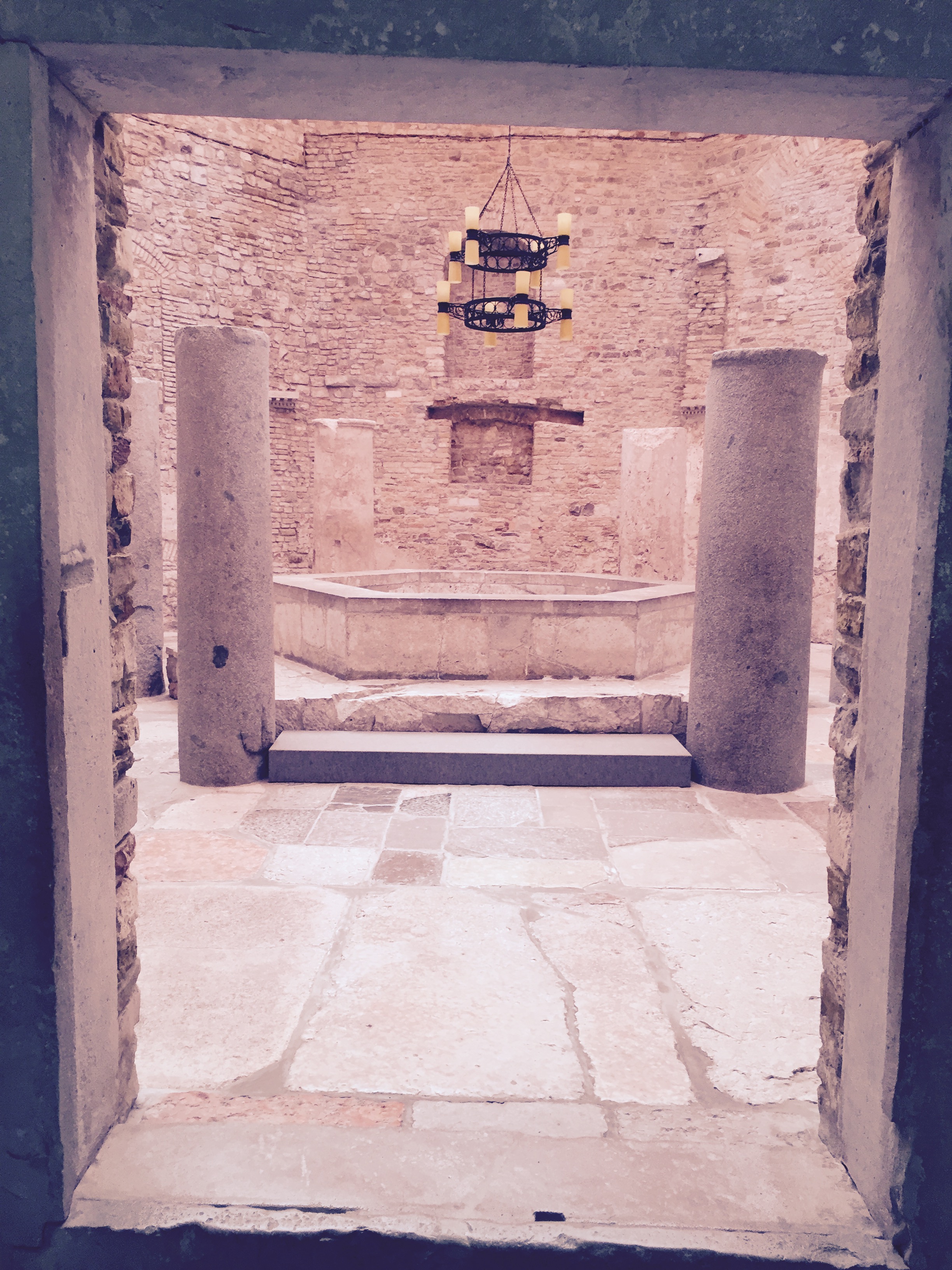

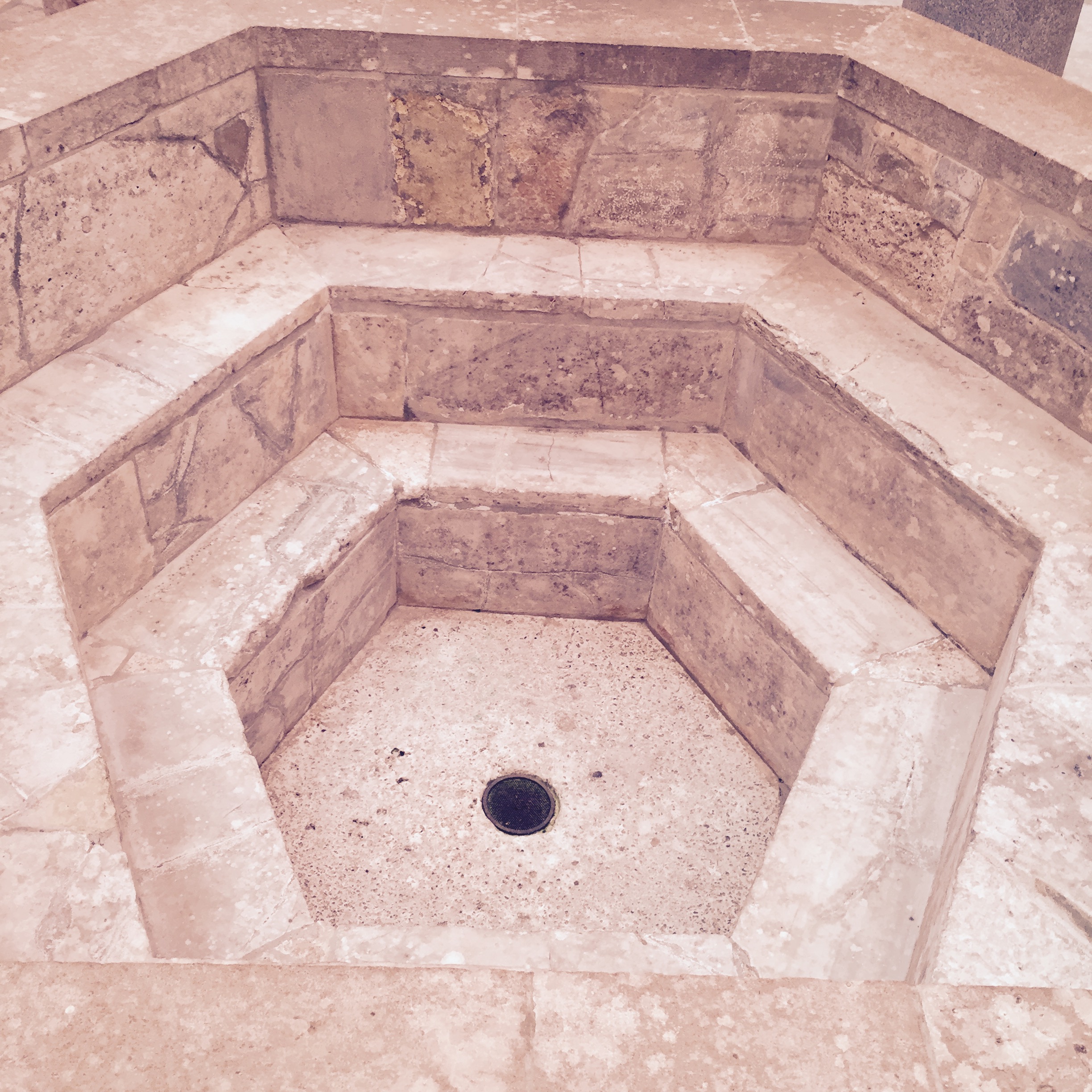
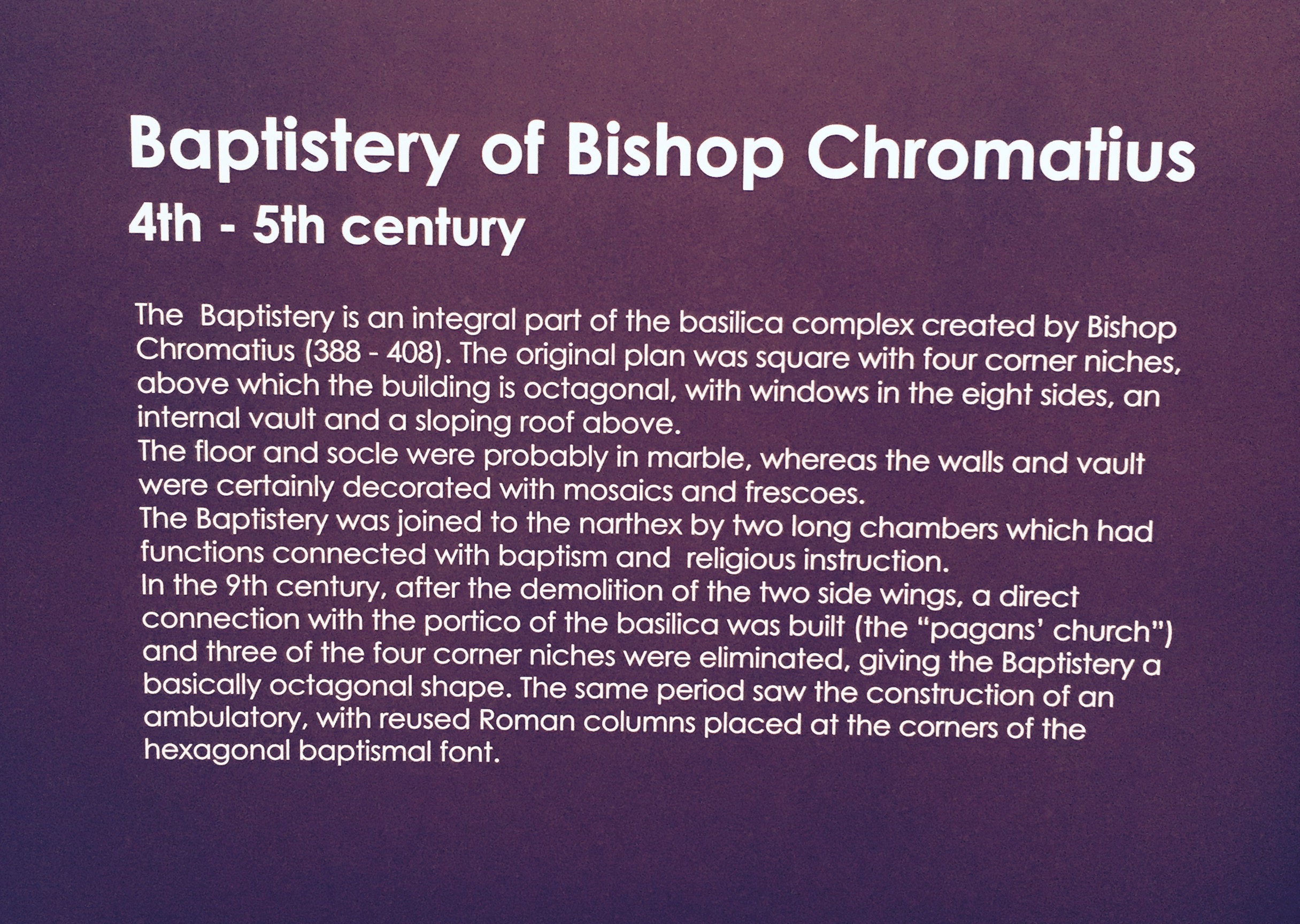
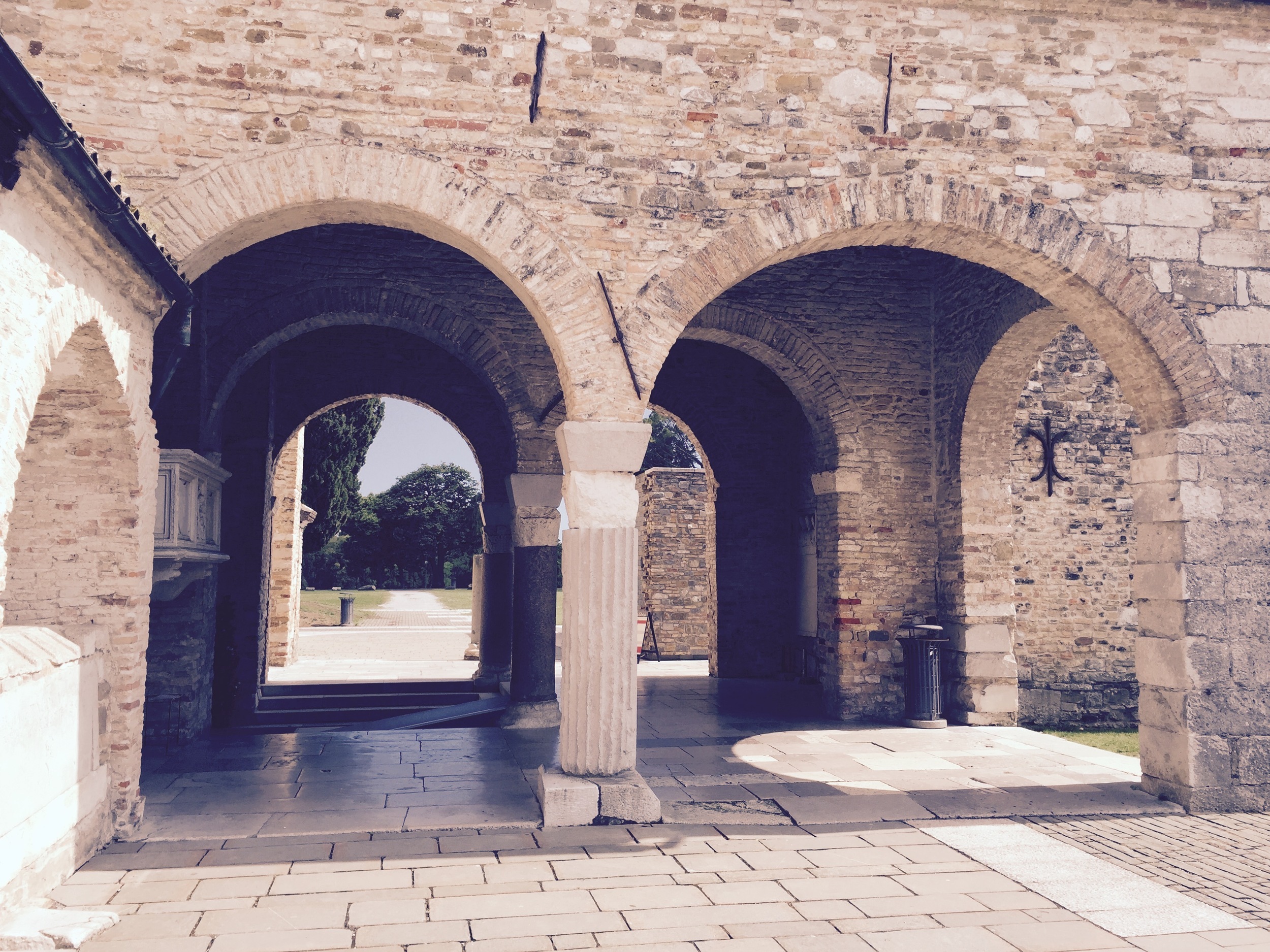

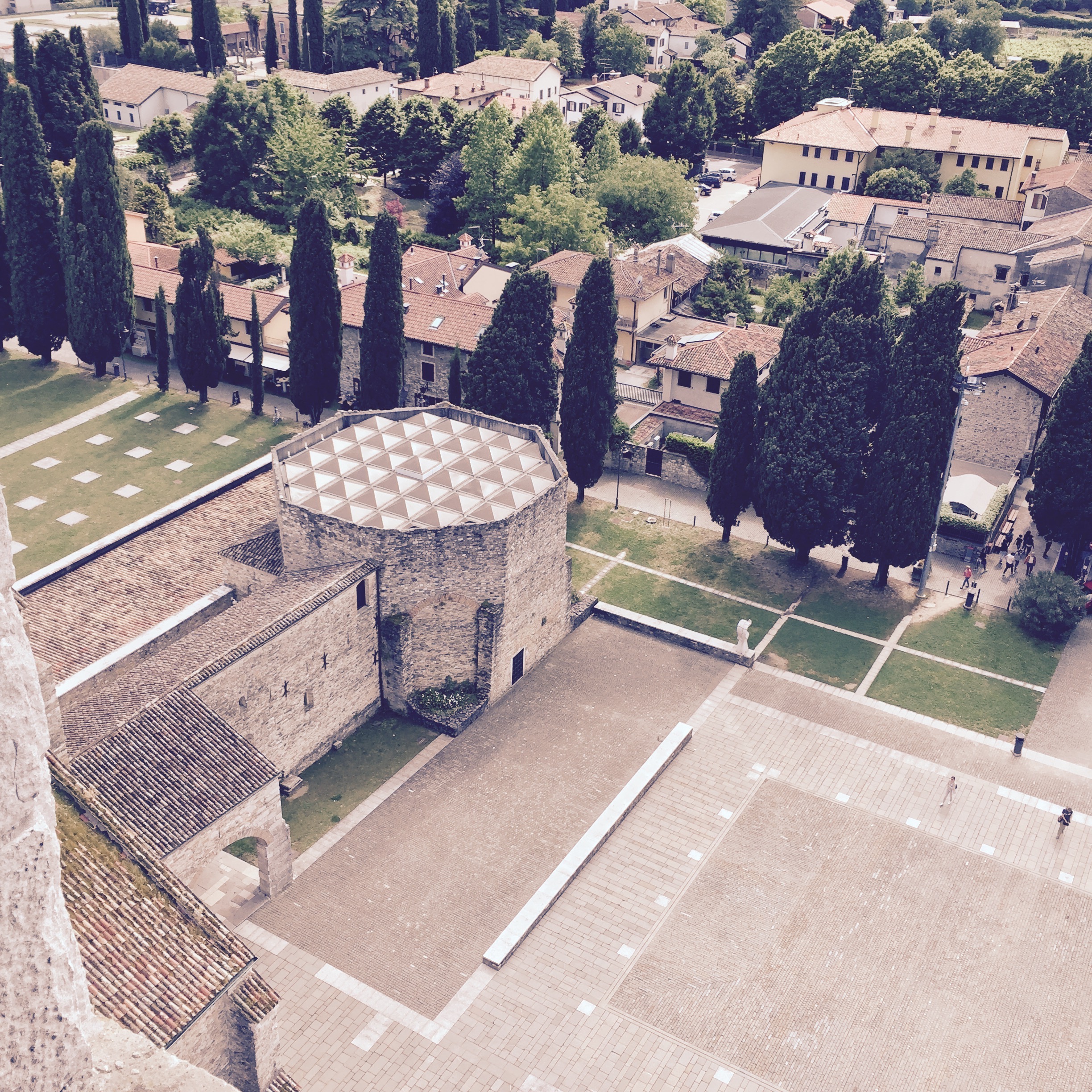


(2) The Pistis Sophia Mosaics
I won't bother you with the many-layered archeological timeline of this place. Suffice it to say, we know that the current space of the bell-tower, basilica and 'pagan church' hosted large buildings since at least the first century. As one would expect for such a massive timespan, from then until today they were constantly evolved, adjusted and extended. By the 4th century though, the mosaics, many of which we can still marvel at in the Northern hall, had already been created. At that time the basilica had not been built yet, instead the space was taken by a large northern and southern hall, combined by a possible third building. What exactly happened in these buildings during the early 4th century is unclear, however, we do know that they served spiritual purposes and that one of them was possibly used for ceremonial purposes while the other might have been used for preparations, such as washing, dressing and contemplation.
And here is where the unique history of this place truly comes to life. The strong ties between Aquileia and Alexandria that led to the confluence of gnostic philosophy and early Christian iconography, found their most stunning representation in the mosaics of the former Northern hall. Here we encounter a full gnostic iconographic cycle depicting the different stages of the ascent of the soul towards the divine according to the Pistis Sophia.
The images are only partially maintained today. Yet we can still see enough of them to understand their original layout: the walk started with images depicting the earthly realm and its offerings (flowers, fruits, mushrooms, etc.). Most likely this place was reserved for the Neophytes allowing them to meditate on the mysteries of the direct corporal existence (e.g. a snail emerging from her shell as a symbol of the soul kept inside the shell of the human body).
The depiction of the underworld is missing in the remaining mosaics. However, we do find evidence of the planetary realm as described in the Pistis Sophia - a space that was most likely reserved for more advanced practitioners. For example the realm of Zeus and its Archon Jachthanabas is depicted as a fiery winged horse. The related two sides of the human psyche (ego and essence) are depicted as a blackbird and a crow sitting besides a pomegranate. The sparks of true light (souls) are represented as ornamental knots and flowers in circles or ovals. Equally in the same area we encounter the realm of Venus, protected by the Archon Typhon (who has been described as 'donkey-faced') depicted in the shape of a donkey. Beside it we see two partridges illustrating the urges of lust and desire.
Beyond the images of the planetary realm the gnostic would have advanced to walk amongst the fixed stars. Here we find certain constellations depicted as residing high above trees - such as a lobster representing the stars that form the tropical sign of Cancer.
Further ahead one would have walked through images depicting the Pleroma and into the most holy area of the gnostic Ogdoad, now represented as mosaic images within eight-sided emblematic frames. Two of the most stunning mosaics surviving can be found in this area. A large ram as a symbol of the first of all tropical signs, the father of all things and the leader of the herd. Above it we find the Latin inscription 'CYRIACE VIBAS', i.e. 'Cyriace is alive'. Now, Cyriace was a common Roman name meaning 'belonging to the Lord (Kyrios)'. And so hiding in plain sight this seemingly innocent inscription the gnostic was a reminder that if their soul had advanced to such tremendous heights, beyond the planetary realm, the adept now belonged to God and truly had come to life.
Right next to the ram we see a rooster fighting a tortoise. While the gnosticism of the Pistis Sophia certainly isn't as dualistic as some other forms of gnosticism or even Zoroastrism, here we encounter the direct fight of good against evil. The rooster is a common symbol of light and dawn whereas the tortoise in this context, living deep inside its shell the symbol of evil and darkness. That latter symbolism would have been underpinned by the likely Latin root of the name tortoise, tartaruchus, meaning 'of Tartarus'. Above these forces of eternal conflict, we find the depication of an amphora, a container of the soul. Thus this scenario is heavily reminiscent of the Egyptian depiction of the Weighing of the Heart in front of Anubis and Maat: a reminder to the adept that every action should be understood as a direct expression of the eternal struggle to maintain divine order and balance.
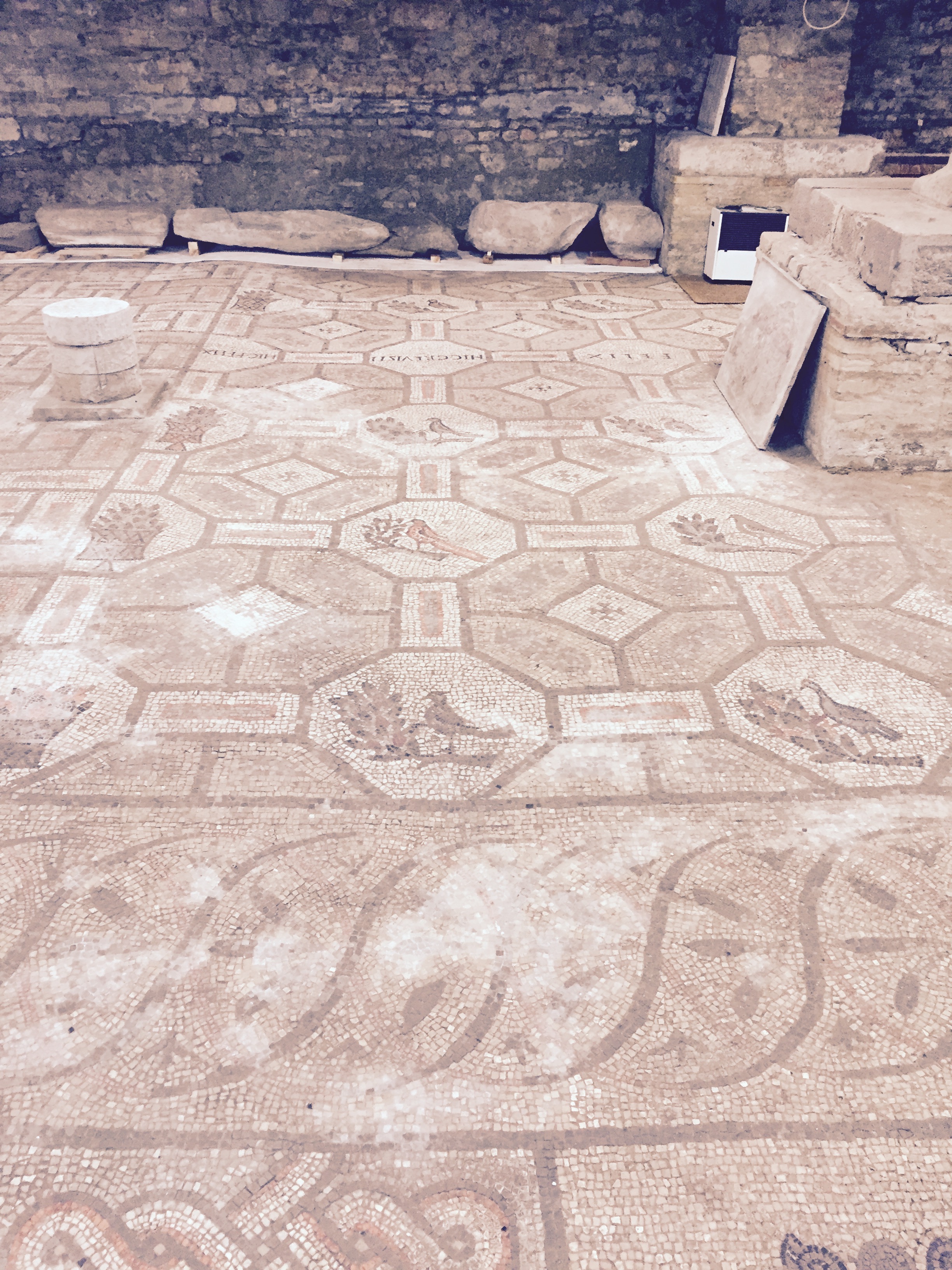
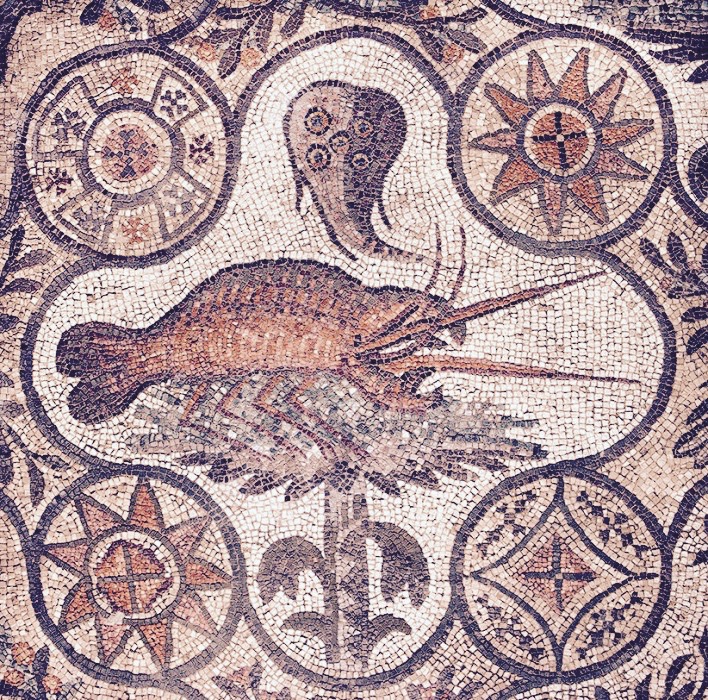
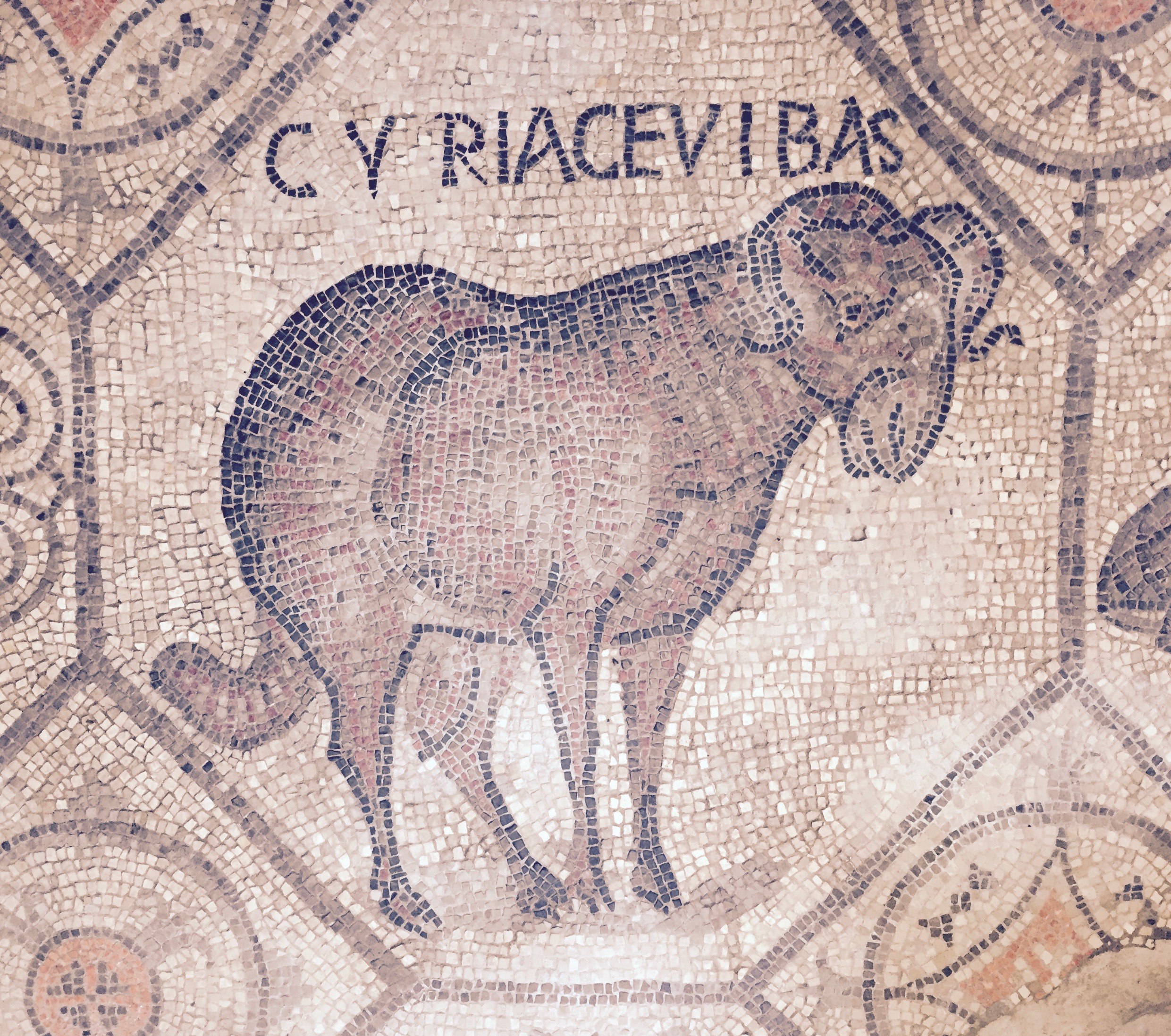



(3) The Bell-tower and Basilica
So fast forward several hundreds of years - including the burning down of our gnostic sanctum by Attila in the fourth century as well as ongoing Christian manipulation of the surviving mosaics to fit their own agenda (e.g. the change of one of the images depicting the constellation of the dragon into a child). Here we are now in the early 1000s AD and a full blown basilica and bell-tower are being erected right upon this ancient gnostic church. Rather than destroying the wonderful remaining mosaics completely, however, the smart architects decided to incorporate them into their new design and actually significantly extend them. This is why as we enter the large basilica today, we can find its main hall completely empty - without any benches - and the stunning new mosaics on large display.
Now it would be easy to brush the Christian buildings aside as the typical architectural rape of an ancient pagan site. Yet, if we pause and pay true attention to detail, we begin to see that while significant aspects of the gnostic art were destroyed as part of the latter building process, there is an unbroken spirit of gnostic practice which also extends into the newer buildings (which are still more than a thousand years old today). Let's illustrates this on two examples; you'll certainly find more on your own visit to this special place.
- The wooden roof of the basilica is covered in its entirety with one of the most powerful geometric patterns - directly connected to the idea of the ascent of the soul to the divine at least since the early days of Merkabah practice. A sea of golden double tetrahedrons is watching down on the vast hall of the basilica - and shines even brighter in yellow and gold as we ascent closer to the altar.
- The bell-tower was erected right upon the previous Northern hall and its stunning mosaics. However, many of them survived until today - and would have still allowed the spiritual practitioner to wander around the tower in meditation, before ascending it. Even right in the middle of the tower the original mosaics were carefully preserved and can still be seen today. Thus the idea of creating a space for meditation on the soul’s ascent to god is still intact: it has now been turned into an actual physical ascent in the dark belly of the tower - still surrounded by the underground remains of the ancient gnostic mosaics.

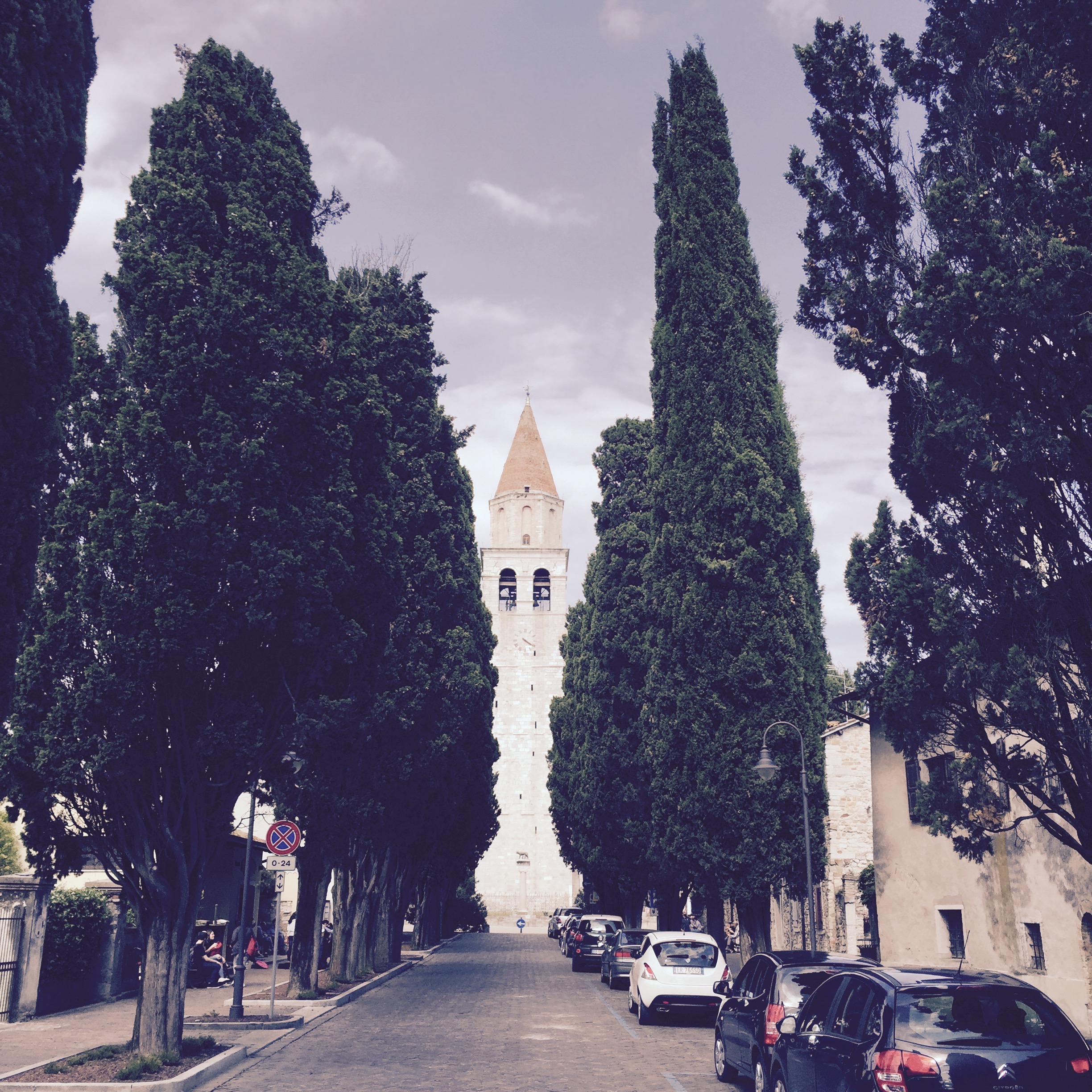
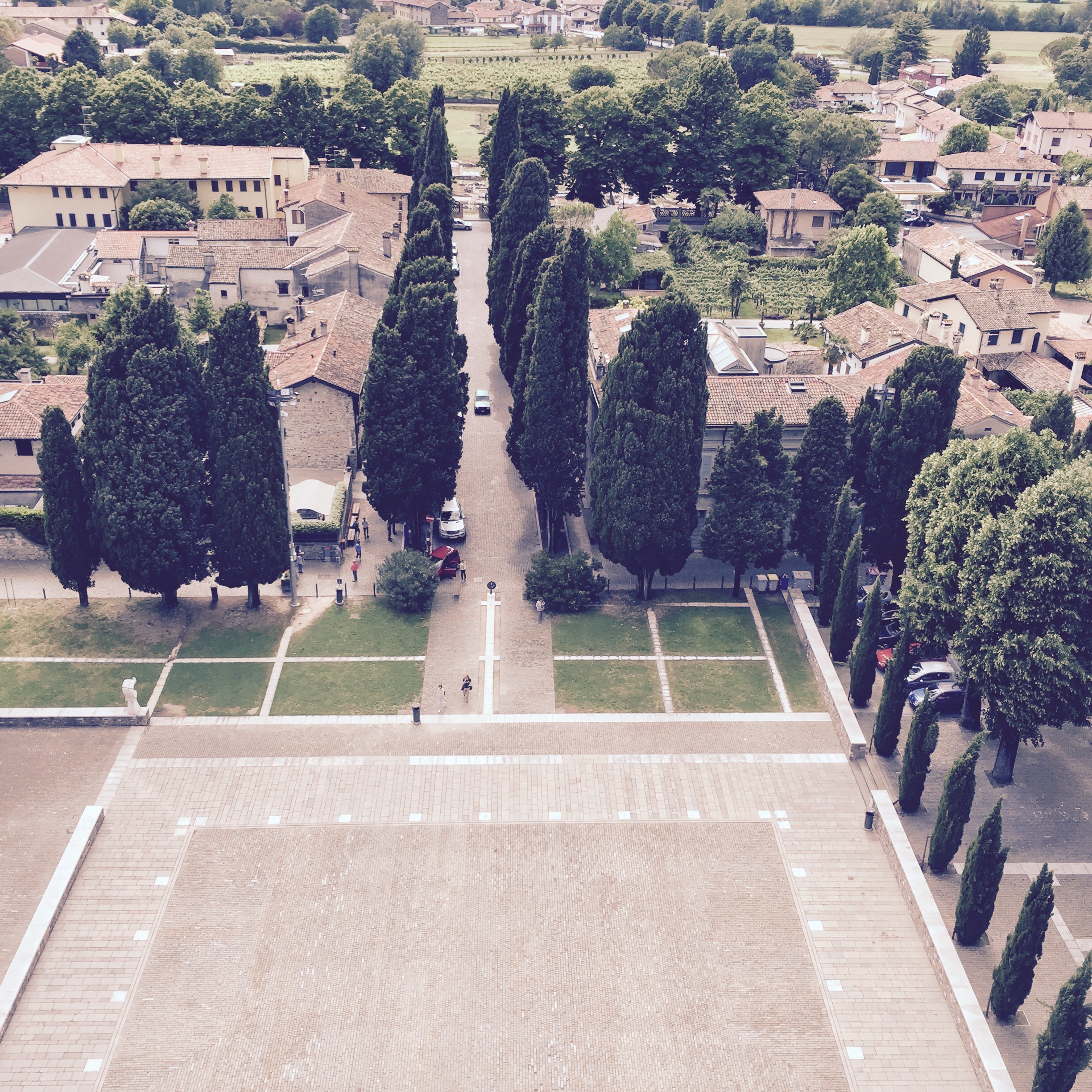
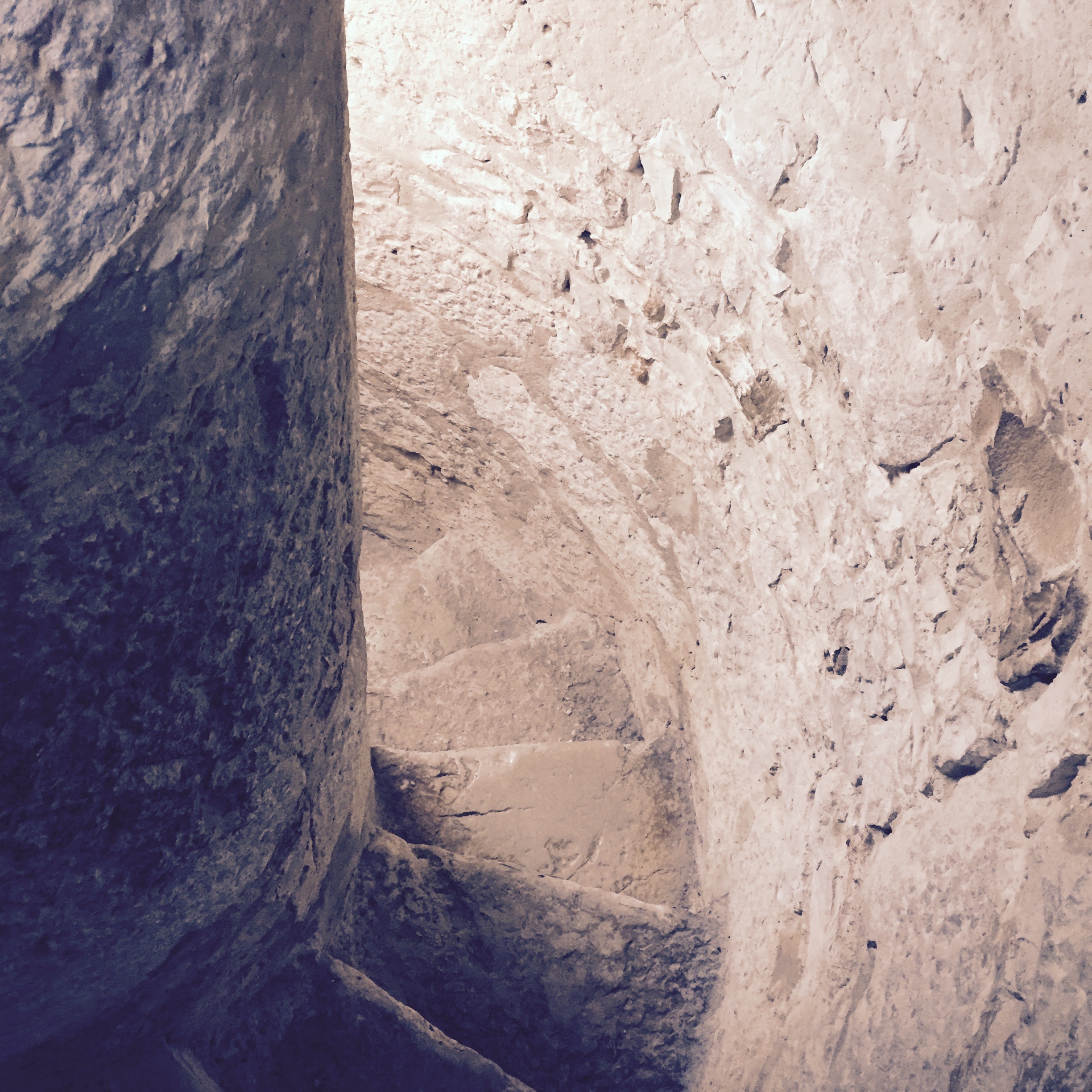
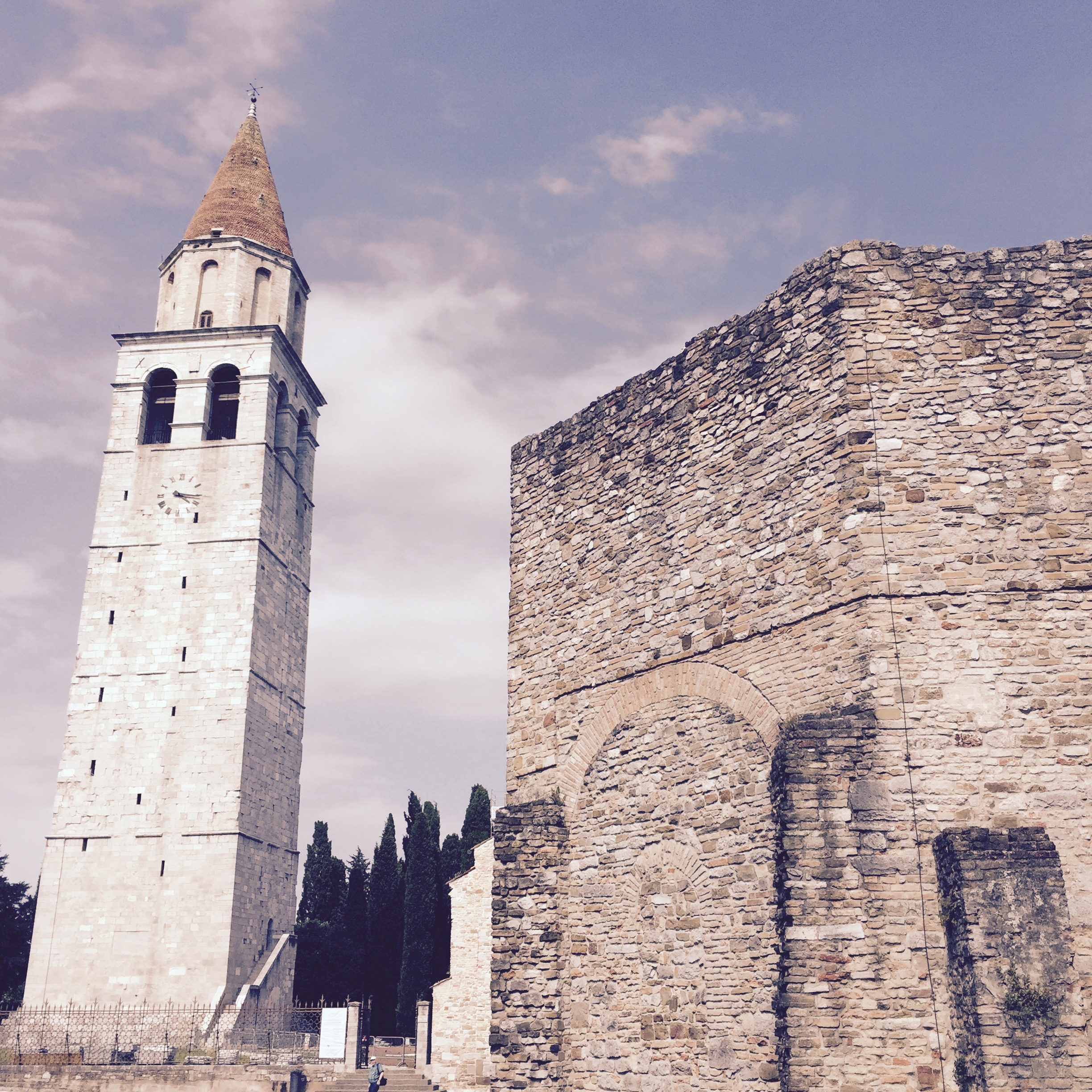

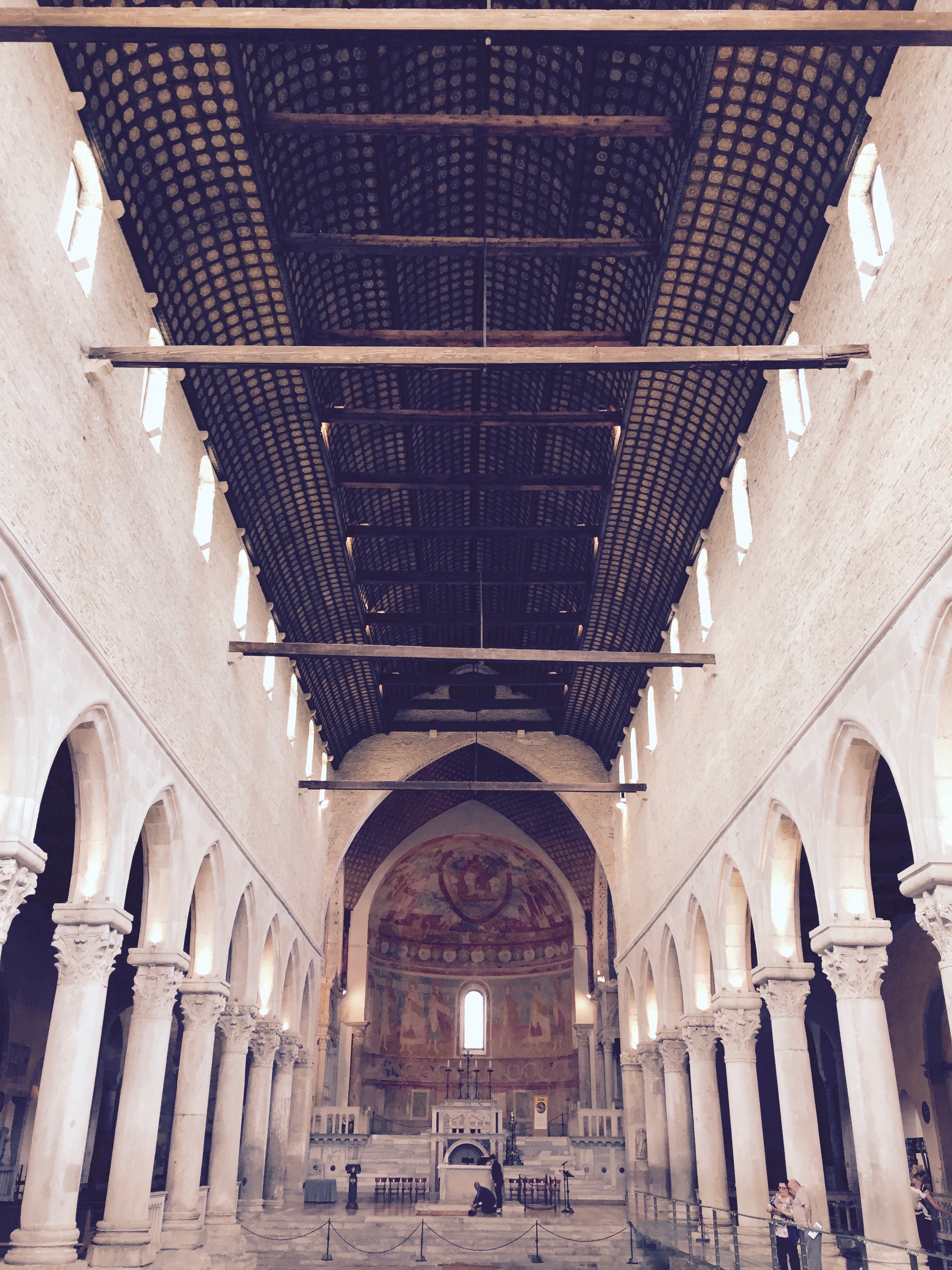

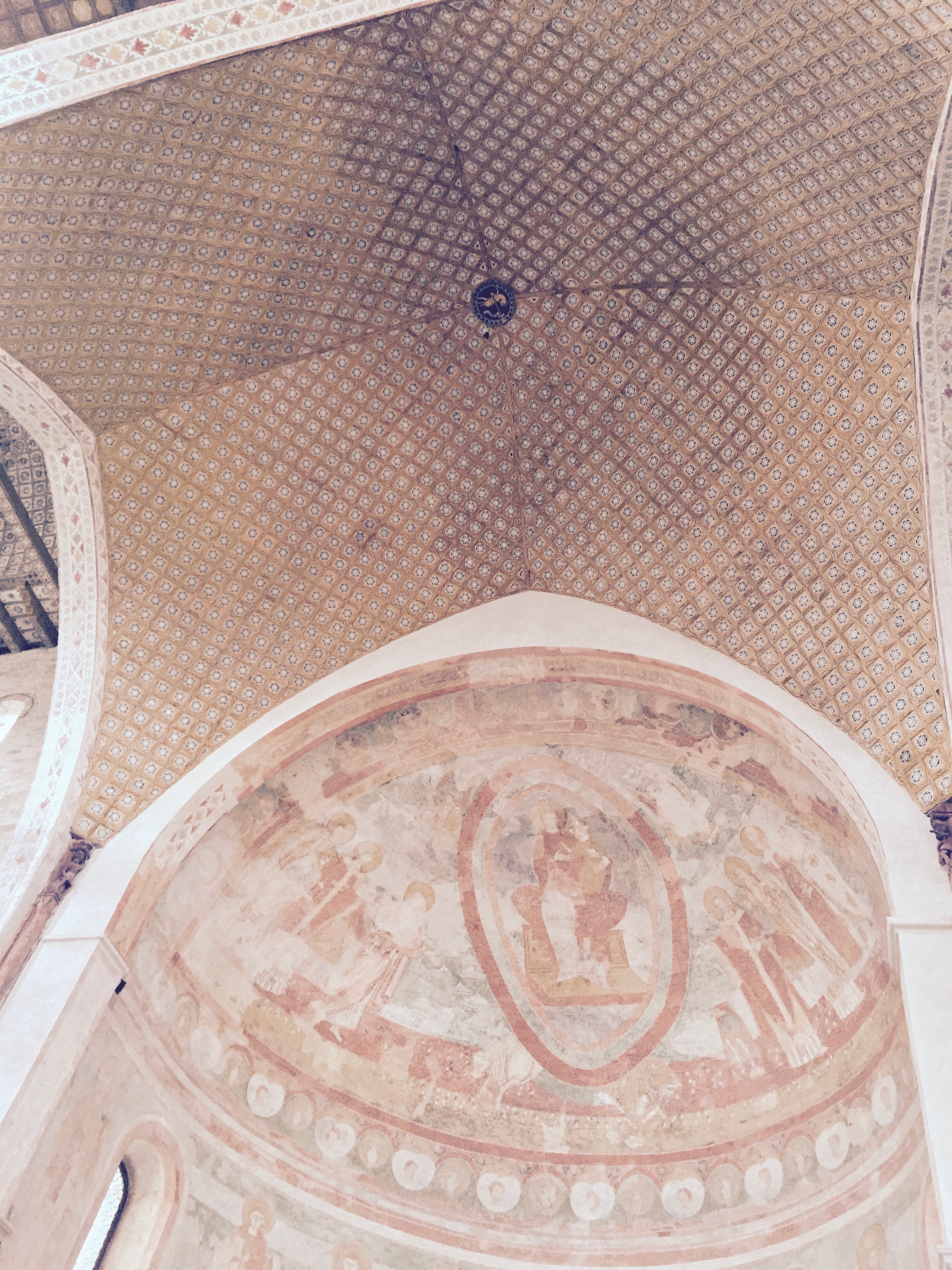



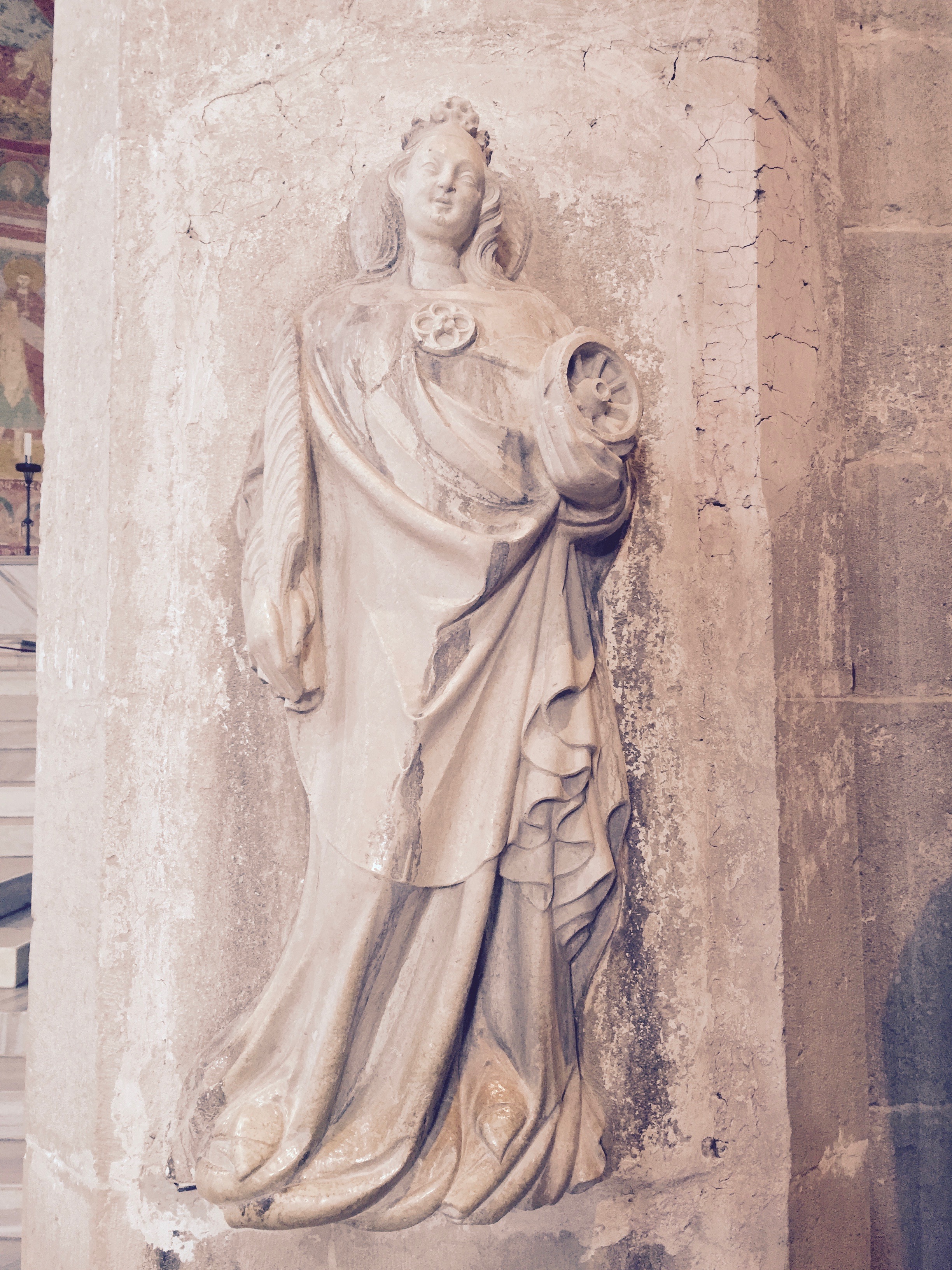
That day was truly special - seeing this maze of our past still so alive and open to everyone who wants to see. One of the large, multi-language displays even called out the direct connection of the mosaics to the Pistis Sophia. And the baptistery is known to this day as the 'last pagan church' in Italy. More practical research is necessary to better understand the purpose of the original buildings, the techniques applied and which living force protected them for more than 1500 years from complete destruction... But the physical connections is made, and now it's easy to return in spirit whenever needed.
On the vacation that followed, I made a few more unexpected occult encounters. One with a vast and almost forgotten masonic museum tucked away in the south of Florence, another one with a huge Rosicrucian private garden - which similar to the original mosaics in Aquileia, had been designed to assist us on our journey home to the divine... As time permits, I'll be sharing more. For now, I will return to the lecture of the Pistis Sophia.

